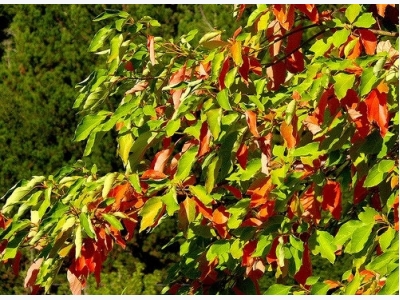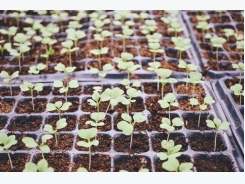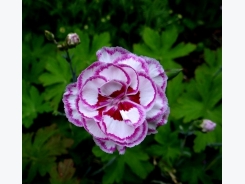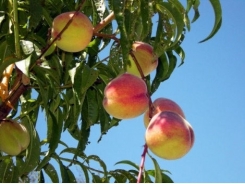How to Grow a Sassafras Tree

Creative Commons Flickr photo courtesy of J.G. in S.F.
The sassafras (Sassafras albidum) is a small, handsome deciduous tree with a height of about 30 feet and a spread of about 20 feet. It can be grown in U.S. Hardiness Zones 6 to 8.
It is beautiful as a stand-alone feature in your landscape with yellow flowers in early spring before leaves appear, attractive foliage late spring until fall, bright yellow to fiery orange coloring in autumn, and lovely bark and interesting branching for a pretty winter silhouette.
The sassafras tree is native to North America. Aside from being a strikingly attractive tree, it is sometimes grown for the medicinal properties of its fragrant roots. Some historical accounts attribute the beckoning fragrance of the sassafras tree to Columbus's discovery of land in the Americas. Long before Columbus, Native Americans had been using the sassafras tree's leaves and roots for medicinal purposes. Many today enjoy sassafras tea made from the tree root, and sassafras leaves are used to flavor gumbo and other Creole dishes.
How to grow and care for the sassafras tree
To start the sassafras tree from seed, plant the seed 1/2 inch deep in cool soil during the fall where it will lie dormant. In the spring, the deep tap root will begin to develop, so fertilize with a root growth stimulator. When the weather is dry, make sure to water your seeds. Cover with a peat moss mulch to maintain moisture. Once your sapling is able to produce a dozen suckers, cut the suckers back to maintain the strength of your original sapling. You may want to support your young sapling to encourage it to grow straight.
You may be tempted to get a jumpstart on growth by transplanting a wild sassafras, but this is not recommended. Transplants of the sassafras tree are difficult due to their long taproot. Rather, purchase a more mature sapling in a container from your local nursery.
Whether started from seed or purchased in a more established state, the sassafras tree loves the sun. It will display the most spectacular fall foliage if grown in full sun, but it will grow in partial shade as well. It prefers slightly acidic soil. Sand and well-draining clay is recommended, although rocky locations work well also. The sassafras is highly tolerant to drought situations, but it prefers moist, well-draining water conditions.
The sassafras tree can be pruned depending on your preference. It has a tendency to grow multiple trunks which adds dimension and interest. However, for urban and suburban growing, a single trunk may be favored. Prune early in the life of the tree to one trunk. The tree will maintain this single trunk form without further pruning.
A pollinated female sassafras tree will produce a pretty purple fruit that will ripen in the autumn. This fruit attracts birds and other wildlife to be enjoyed in your garden landscape.
Sassafras Pests and problems
The sassafras tree is a hardy one. It generally is not prone to pests, but it can be bothered by Japanese beetle, promethea moth, Sassafras weevil, and scales. Potential diseases include cankers, leaf spots, mildew, wilt, and root rot. These are mostly cosmetic diseases. Root rot can be avoided with careful planting. The brittle nature of this tree makes its branches susceptible to breaking in high winds and ice load, so consider this when planting near homes or other structures.
Related news
Tools

Phối trộn thức ăn chăn nuôi

Pha dung dịch thủy canh

Định mức cho tôm ăn

Phối trộn phân bón NPK

Xác định tỷ lệ tôm sống

Chuyển đổi đơn vị phân bón

Xác định công suất sục khí

Chuyển đổi đơn vị tôm

Tính diện tích nhà kính

Tính thể tích ao



 How to Grow Gaillardia (Blanket Flower)
How to Grow Gaillardia (Blanket Flower)  Common Diseases of Peach Trees
Common Diseases of Peach Trees